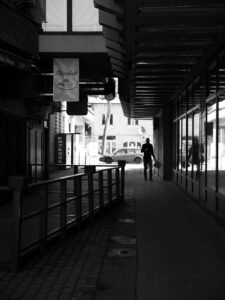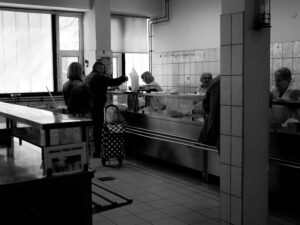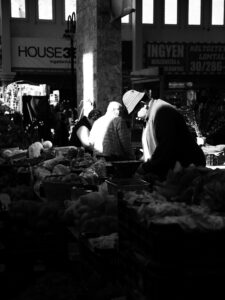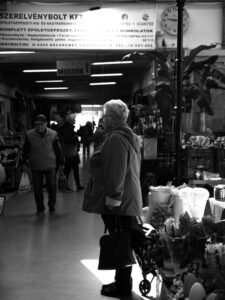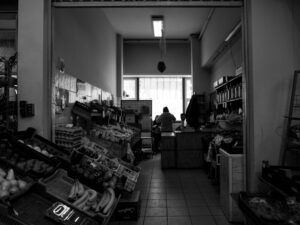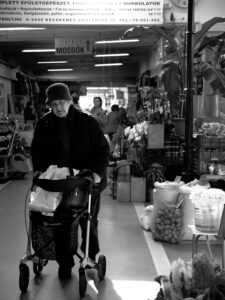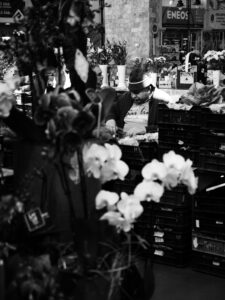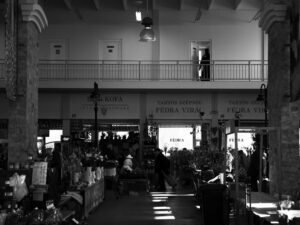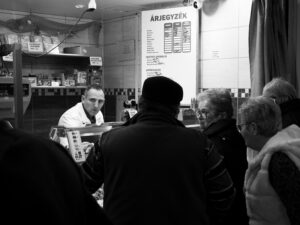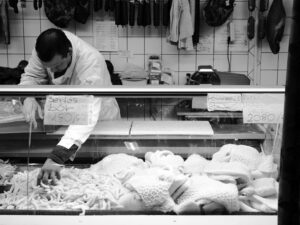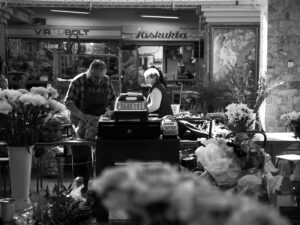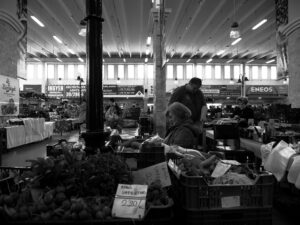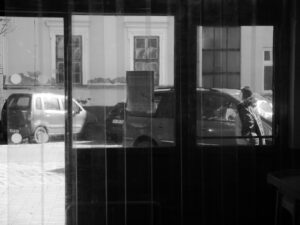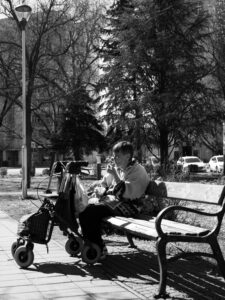Photographed March 31, 2023
This album is to some extent a continuation of my previous album Documentary Series: Nagybani piac - Hungarian Flea Market, the opening text of which is in part relevant to this album as well. This time, however, I photographed a standard market, but stayed in the town of Kecskemét. And unlike my autumn visit to the flea market, I visited this market in spring. Spring is a crucial time in terms of agriculture - it's the season of input - the time when the soil is ploughed, seeds are put in the ground and farm animals breed. How an agricultural person will fare for the rest of the year and whether they will survive the following winter is largely determined by what happens in the spring. It is also the time of year when the first crops are beginning to grow.
The market I went to was mainly attended by an age group of people who remember a time when agriculture still worked this way on an individual level, the way people thought resembled it, and a large part of those who were at the market may have lived this way in their youth. That the end products of the industry - food - are of paramount importance to this age group, most of us know. Our grandparents are often typical in that they are constantly offering us food, and their first priority seems to be providing sustenance. As if that was the main thing, maybe even the only thing (from their perspective), they are able to offer. This is particularly true in Hungary. It is undoubtedly related to the fact that the times in which this generation grew up brought with it fewer opportunities than the times of later generations. Namely opportunities economic, educational, cognitive, etc. In a sense, we can also look at this phenomenon through the lens of Maslow's pyramid of needs, where the older generation still sees the base of this pyramid as the main thing that needs to be fulfilled in life. Not that this wouldn’t be true, but the younger generations in the developed world see the base of the pyramid as something self-evident and focus more on higher needs. Nor can we say that the older generations do not focus on higher needs, but often for them the lower needs and the higher needs are identical: providing food for the younger generations is also self-fulfillment for them. In contrast to the younger generations, this makes the intergenerational anachronism stand out, showing a shift in living standards and perception of needs.
In some respects, markets are a relic of a time when agriculture was more important, and many areas of human activity were less developed than today. On the other hand, these markets also carry a nostalgic charge and offer a purge of certain features of consumerism (represented by supermarkets), which is, on the contrary, typical of today's times, that, among other things, denies the traditional durations of agricultural time by offering us all agricultural products throughout the year, regardless of the cycle of natural agricultural production. We then pay the price for our haste by having in the winter tomatoes taste like acidic water and cucumbers like sweetened water. While we may be at odds with our grandparents in our priorities, momentary or long-term, or in our daily routines, we must acknowledge that their indomitable nature, dedication and slower lifestyle should be at least an occasional inspiration to us. And in any case, we must acknowledge that Sunday lunch with them is a feast of flavours. This is particularly true in Hungary.

